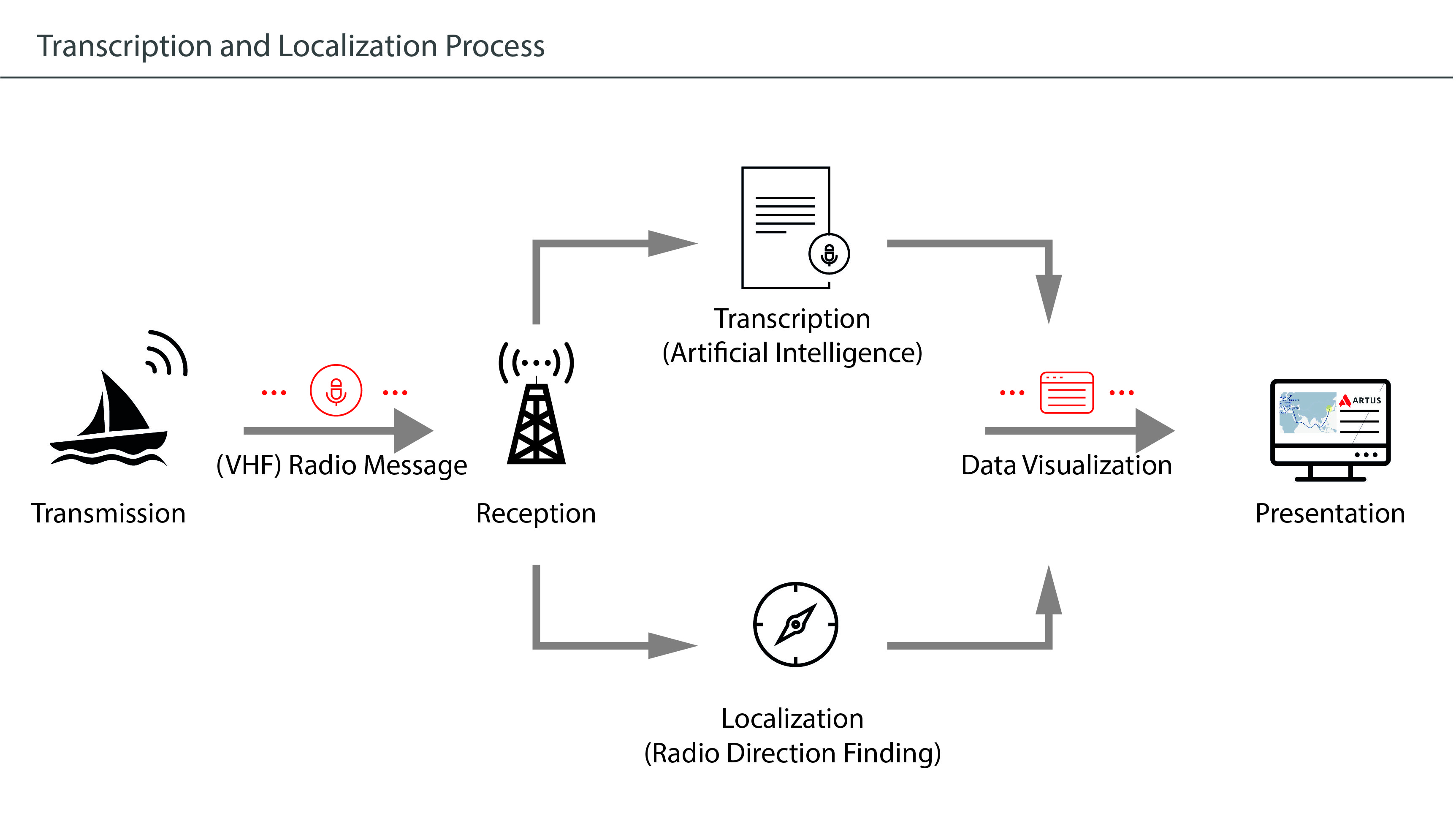Project Description
Project Goals:
Engine noise, harsh environmental conditions or different dialects are only a selection of sources of interference that have a negative impact on the quality of radio communication at sea. Even when using standard phrases, the so-called IMO Standard Marine Communication Phrases (IMO SMCP), comprehension problems between sender and receiver occur time and again, as evidenced by the reappraisal of numerous maritime accidents. To alleviate these difficulties, a project consortium with Fraunhofer CML has launched the ARTUS research project. The goal of ARTUS is the automatic transcription of VHF radio messages as well as the simultaneous localization and identification of damaged ships in order to make the coordination of rescue operations more efficient in this way.
Objectives:
The content of ARTUS is the recording and automatic transcription of maritime VHF communication using artificial intelligence (AI). With the help of the generated transcription, linguistic ambiguities can be quickly identified and clarified. Furthermore, the chronological documentation of the radio traffic facilitates the immediate traceability of the respective conversation situation, which should in particular facilitate the work of the sea rescuers or other emergency forces involved in a rescue. In addition to the written record, ARTUS also localizes the transmitters of radio messages. Based on the bearing of the VHF transmitter and using a complex localization algorithm, the position of a ship involved in an accident is localized, so that in future emergency forces will be able to reach the scene of the accident quickly even in situations where a ship does not transmit an AIS position.
Role of the CML in ARTUS:
In the ARTUS project, Fraunhofer CML will, among other things, generate the basis for training speech recognition AI, in the form of a deep neural network, and implement and test the technology to be developed in ship handling simulators.
Project consortium:
DGzRS (project management), Fraunhofer IAIS, Rhothetha Elektronik GmbH and Fraunhofer CML.
 Fraunhofer Center for Maritime Logistics and Services
Fraunhofer Center for Maritime Logistics and Services
